Can Bronx commuters solve Metro-North's ridership woes? Railroad's leader is betting on it
On a chilly February morning, commuters in heavy coats, AirPods tucked in their ears, crowd the doors of a Metro-North train as it glides to a stop on the Fordham station platform.
Some jog ahead to other cars when it looks like they might have competition for a seat.
Bersy Garcia is staying put. Even when there are plenty of seats, she prefers to stand for the half-hour ride up to New Rochelle, where she works in healthcare.
“I like taking Metro-North more than the subway,” she said before hopping aboard the 7:53. “I’d rather go upstate than go to the Bronx or Queens.”
Garcia and her fellow Bronx commuters have become some of the railroad’s most reliable customers.
Healthcare workers in scrubs, security guards, teachers, government workers.
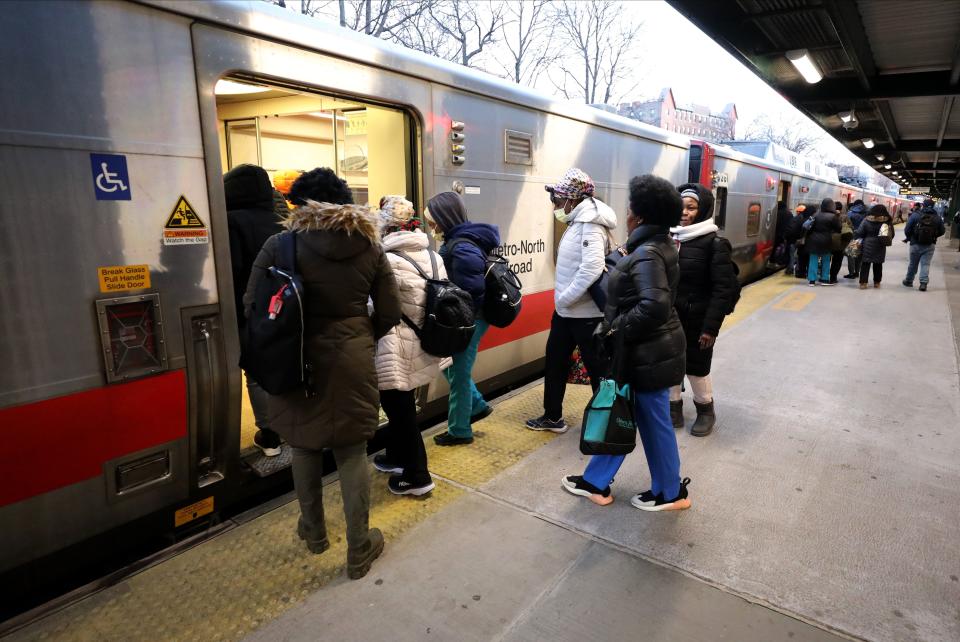
They’re all headed north to jobs in White Plains, Stamford and beyond, an untraditional path for the Metro-North commuter who, in another time, was captured in a stereotype — the man in the gray flannel suit.
Bronx ridership is at nearly 90% of what it was before COVID.
“That ridership held up pretty well during COVID and has recovered better frankly than some of our other areas east of Hudson, which is great to see,” Metro-North president Cathy Rinaldi said.
The Bronx segment of the Harlem Line, which includes Fordham and other densely populated neighborhoods, is actually exceeding its pre-COVID levels. Ridership at the Fordham station alone is up 8% since 2019.
But those east of Hudson lines — the New Haven, Harlem and Hudson lines that deliver commuters to Grand Central Terminal — remain at around 70% of ridership totals before the pandemic.
Penn Station: Westchester, Bronx commuters could see faster transit with Penn Access Project. Here's how
Where did the Metro-North riders go?
Metro-North tallied 60 million rides last year, down from 87 million in 2019.
Blame it on work from home. Remote and hybrid workers — those who commute Tuesday through Thursday — have hollowed out ridership on subways and commuter rails, a trend that, at least for now, appears here to stay.
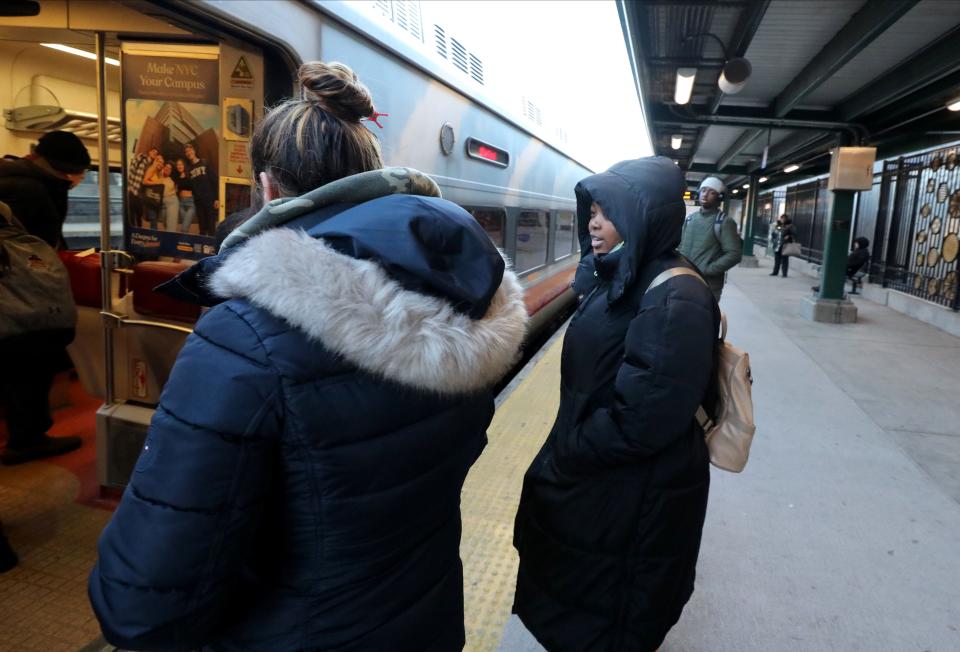
It has Rinaldi rethinking how to tap into those untraditional markets to make up those 27 million rides lost last year.
“Because hybrid work doesn’t seem to be going anywhere, we’re thinking strategically about how to bring back our ridership,” Rinaldi said.
Could Garcia and her fellow Bronx commuters be the answer?
Not likely. At least not yet.
But Metro-North has a plan in the works that could boost Bronx ridership even higher.
What are Metro-North's Bronx plans?
The Bronx’s 3.1 million riders last year represent a fraction of Metro-North’s total ridership.
But in the coming years the railroad has plans to add four stations in the Bronx to deliver riders down the west side of Manhattan to Penn Station for the first time.
The $2.6 billion Penn Station Access project is slated to be completed in 2027. It will include stations in Hunts Point, Parkchester/Van Nest, Morris Park, and Co-op City, shaving an estimated 75 minutes off northbound commutes from the Bronx.
Commuter groups think it’s the right time for Metro-North and its parent agency, the Metropolitan Transportation Authority, to offer more affordable options for riders, ones that would create one fare for subways, buses and commuter rails.
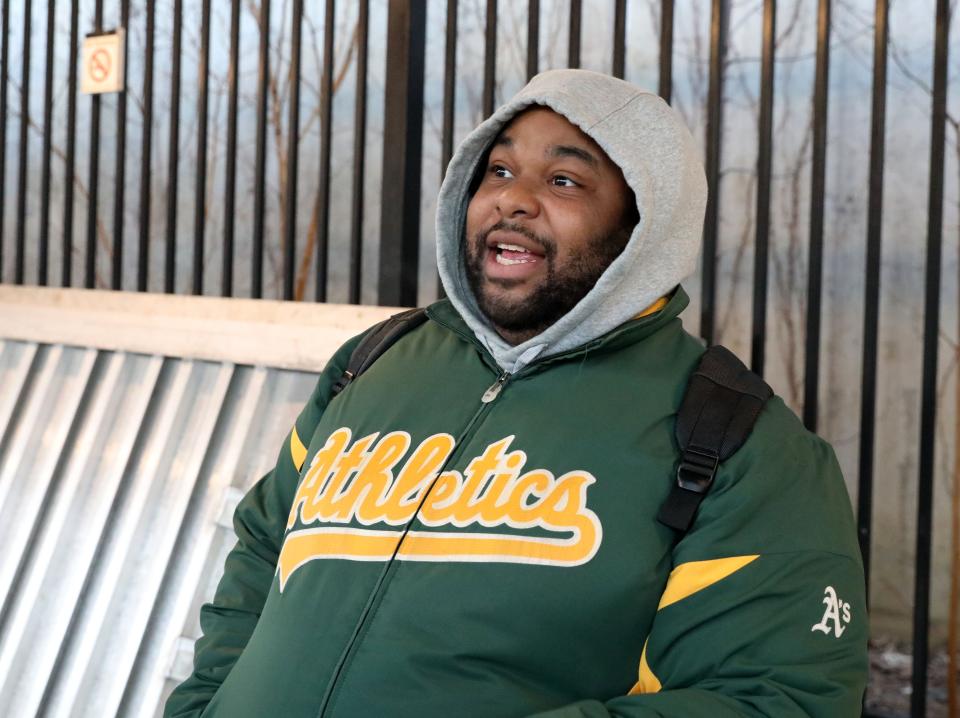
“There are four new stations coming with Penn Access,” said Lisa Daglian, the executive director of the Permanent Citizens Advisory Committee to the MTA. “What better time to look at ways to encourage, entice and implore people to come to the rails than by giving them access to service that they might not otherwise have.”
It costs $26 for a weekly ticket from Fordham to White Plains and $23.25 to New Rochelle.
The MTA could add a weekly option on the City Ticket, which costs $7 during peak hours and $5 during off peak hours for trips within New York City on Metro-North and the Long Island Rail Road, Daglian says. Since the ticket was expanded to include around-the-clock service in August, the MTA has tallied nearly 1 million sales.
The weekly option could be modeled on one tried out in Brooklyn and Queens at a cost of $60 per week, Daglian said.
“It increases revenue and ridership,” Daglian said. “That’s a great opportunity for people who live near the commuter rails and simply can’t afford them.”
The hunt for new revenue sources is critical for Metro-North and the MTA, which received billions of dollars in federal and state funding in the wake of the pandemic. It's banking on congestion pricing — a plan to charge drivers for travel south of 60th Street in Manhattan — to deliver $1 billion in annual revenue.
Congestion pricing NYC $15 toll: Can Hudson Valley commuters speak out before congestion fee starts?
Building a market in the Bronx
Metro-North first recognized an opportunity in the Bronx in the late 1980s.
At the time, Howard Permut headed the railroad’s planning department. Permut says someone on his staff mentioned seeing large numbers of commuters waiting on Fordham’s northbound platform in the morning.
“We did a bunch of what I would call control experiments,” said Permut, who’s been working as a transportation consultant since retiring as Metro-North’s president in 2014.
Vanished: Metro-North's core riders have vanished, railroad wonders if they'll ever return
“I said, ‘you know what, instead of spending $200,000 on a consultant, let’s spend $200,000 to run the trains and see what happens,’ ” Permut said.
More trains — the same ones that took commuters into Manhattan — were turned around to pick up commuters heading north.
“We fixed up the stations, we ran more frequent trains,” Permut said. “We had timetables in Spanish, which was unheard of at the time.”
Ridership totals ticked upward. And monthly reports included updates on the reverse commute.
Rinaldi, Metro-North's current president, said the railroad’s early work in the reverse commute market has helped it weather the deeper ridership losses other commuter rails have experienced.
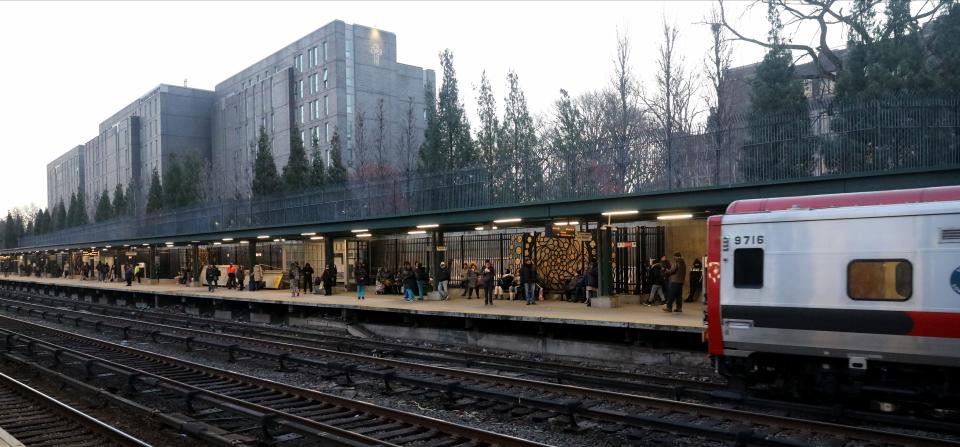
And she said Penn Access could only help things.
With a new stop in Co-op City, commuters can take jobs up in Stamford, shaving time off a commute that takes about 90 minutes today.
“We’re trying to be strategic with respect to looking at our network and how can we make it attractive to people beyond office workers who work in midtown Manhattan,” she said.
Workers: Longtime stairway shutdown on Metro-North line raises charges of ignoring hospital workers
Similar ridership hurdles in Boston. What was the solution?
Metro-North isn’t alone.
Boston’s commuter rail has faced similar troubles.
But in May 2021, to boost ridership, the Massachusetts Bay Transportation Authority adopted recommendations made by Keolis, the private company that runs its commuter rail.
Service on some lines was increased so that two and three hour wait times were knocked down to a half hour.
Discounts: Metro-North to keep off-peak fares through the end of the year, studies commuting habits
“You can imagine when you have one train every two to three hours, you don’t take the train, you take the car, especially in the U.S.,” said Abdellah Chajai, who heads Keolis’ commuter services.
Ridership surged above 90% of pre-COVID levels in late 2023 and into this year.
But, Chajai said, that 90% isn’t the same 90% it was a few years ago.
“The riders we have today are different from the ones we had,” he said. “Yes, some of the commuters are back but not all of them. They’re still doing two to three days traveling. They never came back five days a week. It’s not happening right now.”
Among the lines that saw steady improvement was the Fairmount Line, which, like Metro-North’s Harlem Line, runs through heavily-populated city neighborhoods, beginning in Hyde Park and continuing through Roxbury and Dorchester. In June, the line surpassed pre-COVID ridership levels.
The MBTA has also added more trains on weekends, tapping into riders who head into the city for restaurants or entertainment.
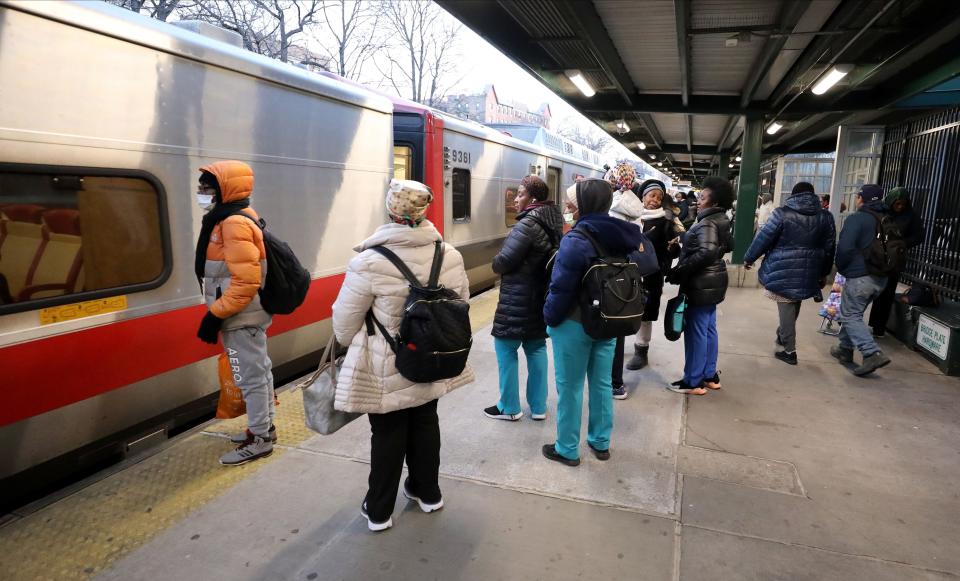
Metro-North has made similar efforts. Weekend travel is around 80% to 85% of what it was before the pandemic.
And Metro-North's Rinaldi hasn’t given up on getting commuters back to five-day-a-week schedules.
Last year’s on-time performance was at 97% and most lines are running with the same numbers of trains they ran before COVID hit.
“Part of the way that we’re going to get people to ride four days a week as opposed to three days a week or five days a week as opposed to four days a week is to give them a good experience when they’re riding,” she said. “We want to give people choices.”
This article originally appeared on Rockland/Westchester Journal News: Metro-North railroad ridership woes: Can Bronx NY commuters solve it?

